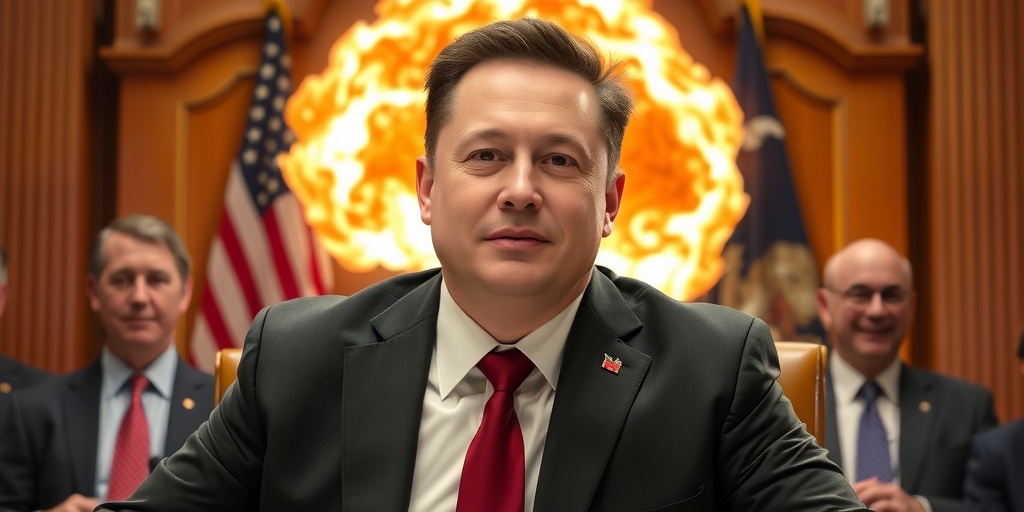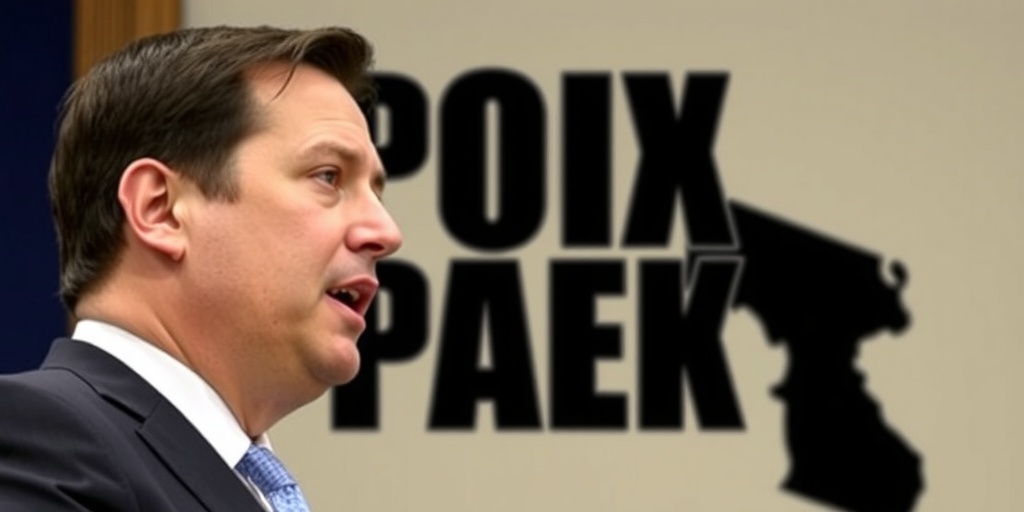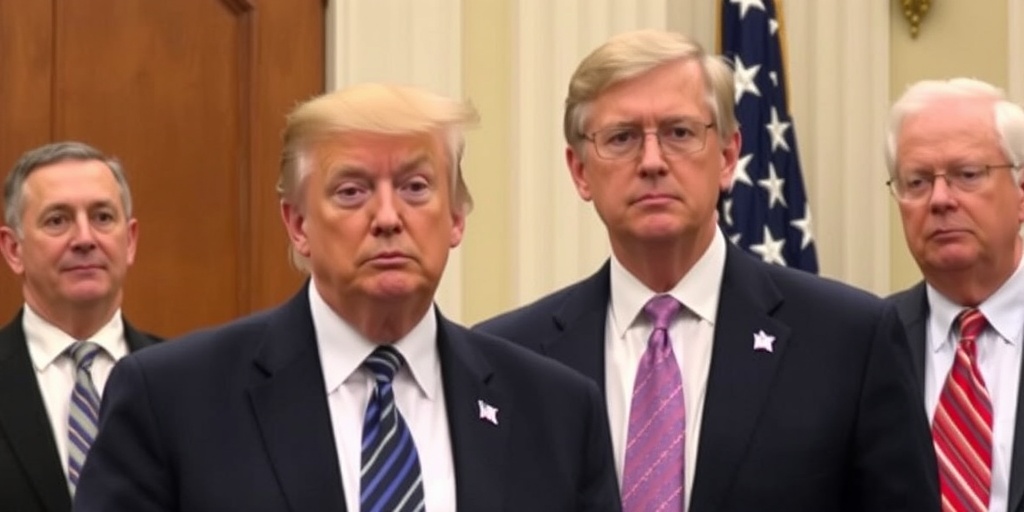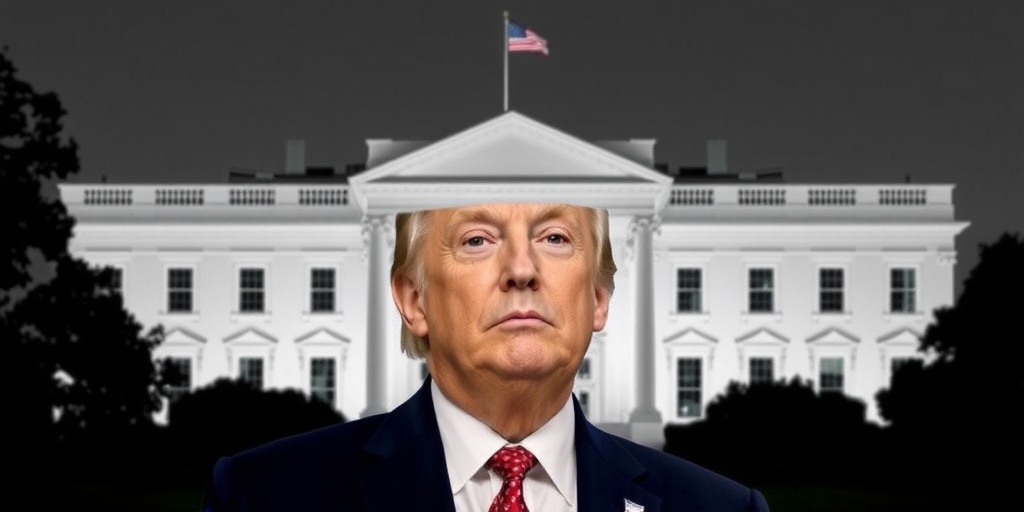Now Reading: “Implications of the Recent Cabinet Blowup for Musk”
-
01
“Implications of the Recent Cabinet Blowup for Musk”
“Implications of the Recent Cabinet Blowup for Musk”

Title: Tensions Rise as Trump Reins in Elon Musk at Cabinet Meeting
In a dramatic turn of events, President Trump has taken a significant step to rein in billionaire entrepreneur Elon Musk during a cabinet meeting yesterday, a move that many observers see as a rare pushback against Musk’s influential role in the current administration. Musk’s dominance in various government dealings has raised concerns among cabinet officials, culminating in a confrontation marked by sharp exchanges and high-stakes discussions.
The meeting, covered in detail by New York Times reporters Jonathan Swan and Maggie Haberman, highlighted a clash of personalities and priorities. Musk, who has been vocal about his intentions to overhaul federal operations, found himself at odds with Secretary of State Marco Rubio. Musk criticized Rubio for being ineffective, claiming he had "fired nobody," prompting Rubio to assert that Musk was merely “good on TV.” Trump, who was present for the exchange, appeared to support his cabinet member’s stance, signaling a shift in the balance of power within his administration.
Sean Duffy, the Secretary of Transportation and a former reality television star, also became embroiled in the discussion when he defended air traffic controllers against Musk’s proposals, which reportedly involved layoffs within the federal workforce. The incident served as a clear indication that several cabinet members have reached their breaking point with Musk’s attempts to exert undue influence over federal operations.
Recognizing the growing unrest among his secretaries, Trump concluded the meeting with a directive that marks a notable shift in policy. From now on, he stated, cabinet secretaries would be the primary decision-makers, with Musk’s team relegated to an advisory role. This decision aims to establish clearer boundaries regarding Musk’s engagement with the federal government, aligning Musk’s role more closely with the legal definitions put forth by administration lawyers in prior court cases.
However, this new directive raises crucial questions about Musk’s future influence in the administration. Historically, Musk has resisted roles where he is not in charge, preferring to spearhead initiatives rather than simply advising on them. Ryan Mac, a journalist well-acquainted with Musk’s business endeavors, confirmed this reluctance, noting that Musk has often sought complete control over projects, rather than being one voice among many collaborators.
Given Musk’s history of acquiring control—most notably as the chief executive of Tesla and the owner of X (formerly Twitter)—the question remains: will he accept this new advisory role under Trump’s regime, or will he continue to pursue dominance within the government’s operational framework? Instances from Musk’s corporate history reveal a pattern of his striving for leadership positions and control over projects he deeply believes in.
Additionally, Musk’s rise to power has not been universally successful. His attempts to lead PayPal were thwarted when he was ousted as CEO, and more recently, he failed to regain control of OpenAI, a nonprofit he co-founded. This failure underscores the obstacles he may face in adjusting to a lesser role in the governmental landscape.
The cabinet meeting also coincided with ongoing shifts within federal agencies, particularly concerning staffing decisions and budget cuts advocated by Musk. As the Trump administration endeavors to slash federal jobs, some agencies have begun to walk back previous terminations in response to public backlash and legal challenges. Essential federal workers, including those responsible for maintaining the U.S. nuclear arsenal, are among those being reinstated, while others are being called back following protests against their dismissals.
Musk’s intervention in the government’s workforce has sparked significant debate, particularly regarding its impact on essential services. The changes enacted by his department have provoked criticisms from various sectors, including cybersecurity, where substantial cuts have reportedly decimated the ranks of key recruits. Furthermore, the new Secretary of Education openly questioned the necessity of her own agency, highlighting the widespread uncertainty regarding Musk’s plans for federal bureaucracy.
In a surprising twist, Musk has also turned to his social media platform, X, to gauge public sentiment regarding his cost-cutting initiatives. Recently, he launched a poll encouraging his millions of followers to express their views on his government efficiency plans, a move seen as an effort to legitimize his proposals amidst mounting criticism from Trump’s cabinet and the public alike.
Despite Musk’s attempts to measure support, his popularity appears to hang in the balance, as his poll results indicate only a modest endorsement for his drastic budget reductions. The mixed signals are indicative of the ongoing tensions within the administration regarding the extent of Musk’s authority and the implications of his cost-cutting approach.
In addition to his ambitions within government, Musk has recently turned his attention to Amtrak, calling it a “sad situation” and advocating for its privatization—a move that could embroil him further in governmental and legislative challenges. However, any such changes would require congressional approval, and the recent record revenue reported by Amtrak raises serious questions about the necessity of privatization.
As tensions mount in the Trump administration over Musk’s role and influence, the unfolding dynamics may offer an intriguing glimpse into the future of his involvement in government and the reshaping of federal operations. The stark contrasts between Musk’s aggressive approach to governance and the traditional roles of cabinet officials are likely to be scrutinized closely in the coming weeks. Whether Musk can adapt to a more subordinate role or continues to push for greater control remains to be seen, but one thing is clear: the relationship between Trump, Musk, and the federal government is set to evolve in unprecedented ways.
Stay Informed With the Latest & Most Important News
Previous Post
Next Post
-
 01New technology breakthrough has everyone talking right now
01New technology breakthrough has everyone talking right now -
 02Unbelievable life hack everyone needs to try today
02Unbelievable life hack everyone needs to try today -
 03Fascinating discovery found buried deep beneath the ocean
03Fascinating discovery found buried deep beneath the ocean -
 04Man invents genius device that solves everyday problems
04Man invents genius device that solves everyday problems -
 05Shocking discovery that changes what we know forever
05Shocking discovery that changes what we know forever -
 06Internet goes wild over celebrity’s unexpected fashion choice
06Internet goes wild over celebrity’s unexpected fashion choice -
 07Rare animal sighting stuns scientists and wildlife lovers
07Rare animal sighting stuns scientists and wildlife lovers




















